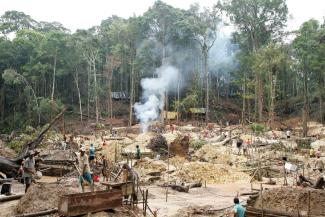Our view
Undeniable challenges

Why the whales went astray on their way south from the Arctic Ocean is unknown. One theory is that they followed swarms of the octopuses they feed on. The squids normally find the North Sea too cold, but they may have ended up there either because of increasing water temperatures or unusual currents that resulted from strong storms. Another theory is that underwater noise from ships and oil rigs disoriented the whales. Solar flares, which influenced the earth’s magnetic field, are yet another possible reason why they lost their way. Whether the whales fell victim to human-made change in their environment is not certain.
In any case, however, a stranded whale perfectly illustrates the fragility of ecosystems – and it triggers emotions. As large mammals, whales resemble us. My children were impressed because the bones of a sperm whale’s pectoral fin look very much like those of a human hand.
Whales appeal to humans, and so do polar bears or orang-utans, two other endangered species that activists like to use as symbols for environmental protection. Pictures of such animals feature prominently in campaigns to protect the climate or primeval forests for example. Using photos this way is entirely legitimate – but the survival of individual species is not what matters most. For the earth system, it is probably irrelevant whether the sperm whale, the polar bear or the orang-utan goes extinct. What is most relevant, by contrast, is that species have never disappeared in such great numbers and at such great speed as they do today. The great risk is that entire ecosystems will collapse should “tipping points” be reached and irreversibly change the environment.
No doubt, humans are the driving force behind the major environmental changes we are witnessing. The dangerous trends are being accelerated by us humans as we overexploit resources, produce waste and generate emissions. Our entire economic system is destructive – especially in the industrialised countries. The great challenge, therefore, is to change that system. For good reason, the UN has been tackling the issues for many years. In 1992, at the Earth Summit in Rio de Janeiro, the international community agreed on the paradigm of sustainable development, adopting important agreements such as the Framework Convention on Climate Change, the Convention on Biological Diversity, the Forest Principles and the UN Convention to Combat Desertification. Many other agreements have since been concluded, such as the Agenda 2030, which includes the Sustainable Development Goals (SDGs), and the Paris Agreement on climate change in 2015. What is still lacking, of course, is determined implementation.
We must not give up. In September, the UN will hold the next sustainability summit in New York, four years after the previous one. It must add strong momentum to fulfilling the commitments made in international agreements.













